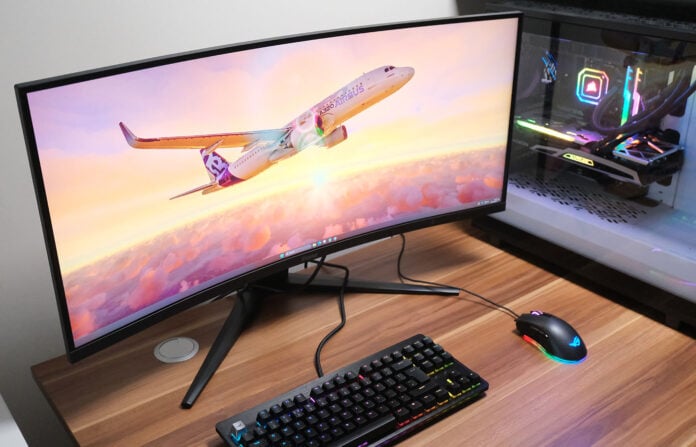The relentless speed of product launches highlights a buoyant display market. Rarely does a day go by without another new monitor, and a vast array of choice is a good thing. Competition has lowered prices, meaning you can bag a meaningful upgrade without breaking the bank.
Japanese firm iiyama tends to play at the forefront of the value segment. Evidenced by the G-Master GCB3480WQSU, keen pricing applies to even glamourous panels. A vast 34in ultrawide canvas, it touts 180Hz refresh rate and complete immersion. Such criteria would have cost a pretty penny not so long ago, but this here panel is retailing for £355. These days, that’s probably about the same as your monthly council tax.


iiyama G-Master GCB3480WQSU
£355
Pros
- Keen pricing
- 180Hz overclock
- Immersive gaming
- Low power consumption
Cons
- HDMI limited to 100Hz
- Subdued colours
- No cable management
Club386 may earn an affiliate commission when you purchase products through links on our site.
How we test and review products.
A relative bargain given the specs, but as with panels at all price points, there are compromises to be aware of. In an effort to keep costs low, iiyama’s supplied stand isn’t the most versatile. There’s no option to pivot or even swivel, though you do get 110mm of height adjustment, and +20° or -5° tilt. Far from a deal breaker, these concessions actually make sense on a gaming-first solution; you’re going to sit front and centre, and limiting movement helps minimise unwanted wobble.
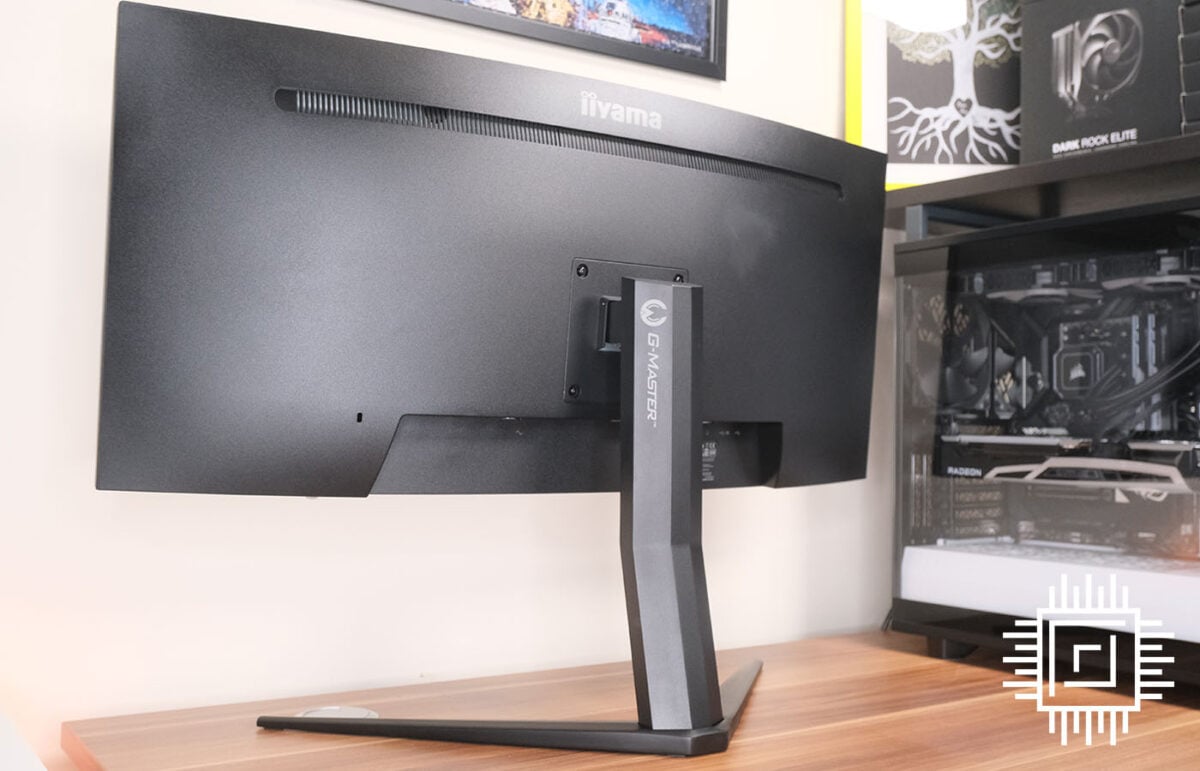
Ports and Features
The absence of a cable-routing hole bugs me a little more, and connectivity is decent but not spectacular. Ports include dual DisplayPort 1.4, dual HDMI 2.0, a headphone jack and a two-way USB Type-A hub. Do note that DisplayPort is the only option to enable 180Hz at the native UWQHD resolution. HDMI limits to 100Hz at 3440×1440, which while decent, falls short of the 120Hz supported by modern game consoles.
Overall presentation is neat and tidy, requiring only a few simple screws to affix the base to the standard VESA mount. There aren’t any gaudy gamer embellishments, and a backlit joystick lining the screen’s bottom-right edge manages control. You can turn off the blue backlight, thankfully, though navigating the OSD is more cumbersome than it ought to be. It’s left to exit some screens, down on others, and not the most intuitive. There’s no Windows app, either, for managing settings from the desktop.
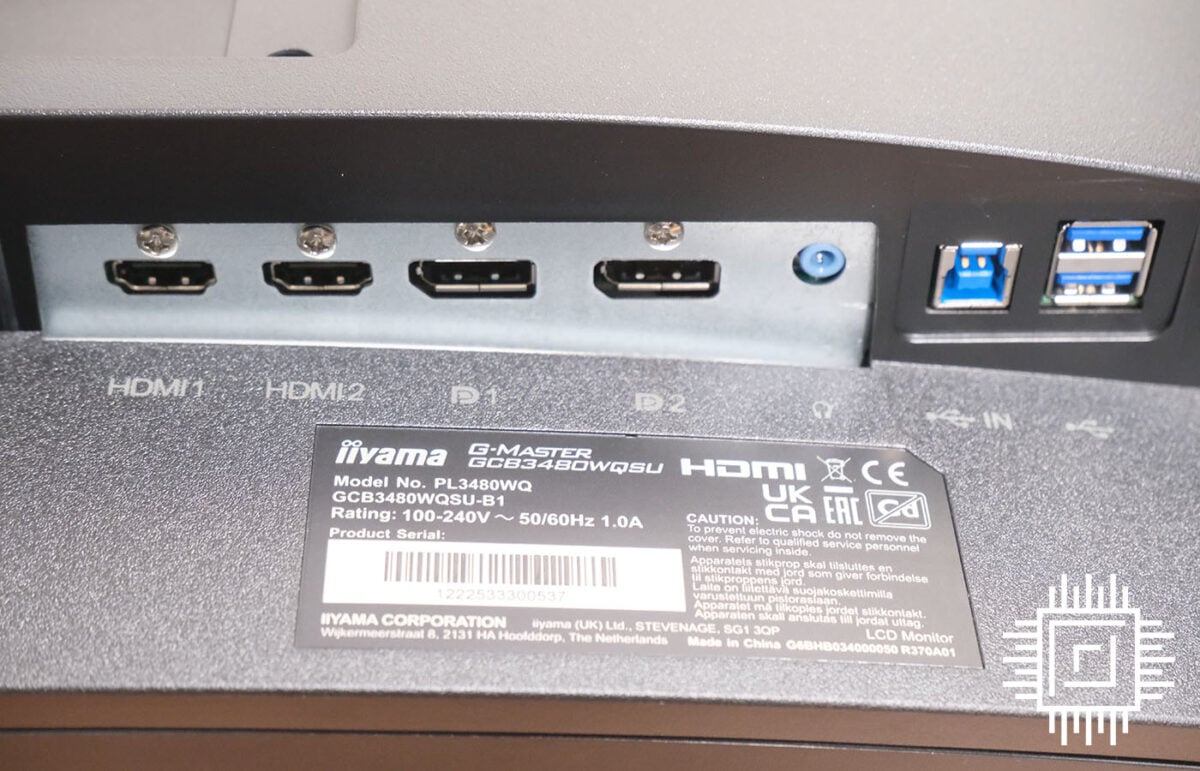
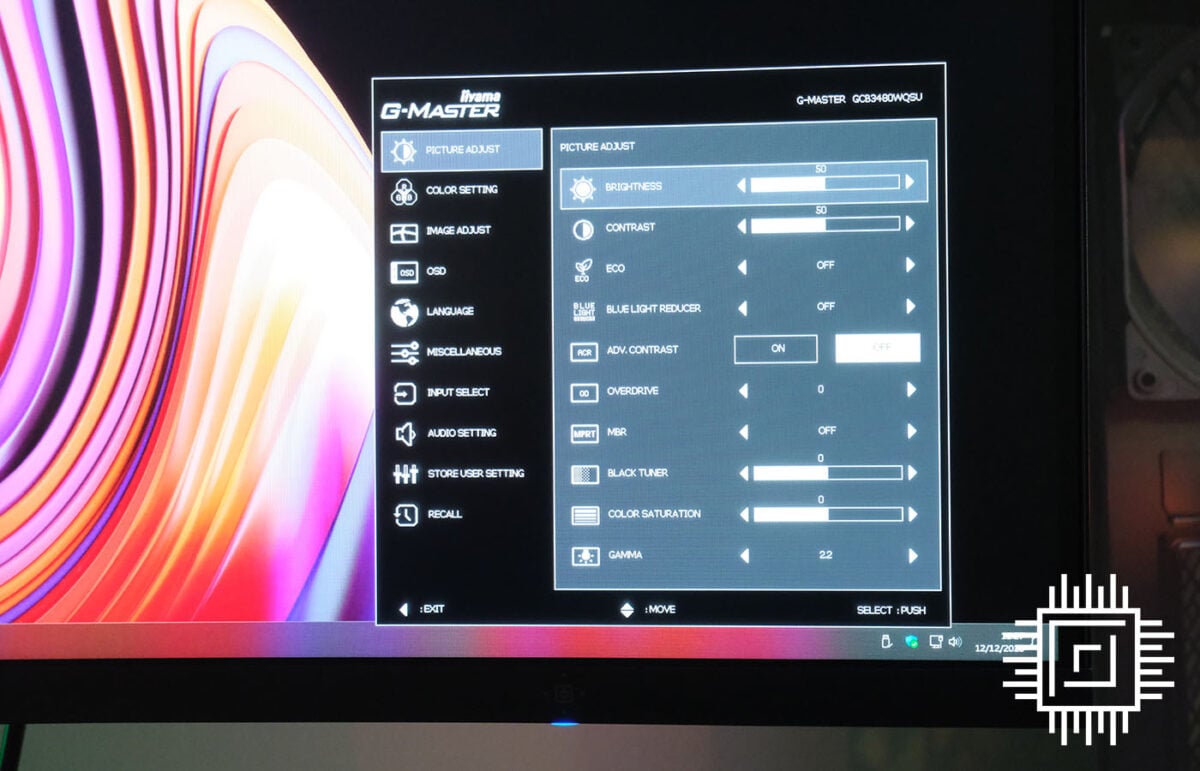
A pair of perfunctory stereo speakers provide basic onboard sound, but it’s clear the GCB3480WQSU is lacking in the extras department. Don’t expect RGB lighting, a place to hang your headphones or even an on-screen crosshair. Instead, it’s up to the panel itself to do the talking, and that’s no bad thing.
iiyama’s 34in VA carries a 1500R curve well suited to an ultrawide. A 3440×1440 resolution is commonplace with this form factor, and the matte finish does a good job of keeping reflections at bay. VA’s weak points remain to some degree but shouldn’t put you off purchase. Viewing angles are forgiving in all directions, black crush is minimal, and while colours lack a certain pop, you retain benefits such as superior contrast to that of an IPS.
High-speed Gaming
How it games, of course, is the most pressing concern. Well, first and foremost, it’s important to note this is a native 165Hz panel pushed to the limit in achieving the advertised 180Hz speed. Indeed, such refresh rates are only availed by enabling a manual overclock via the OSD. Doing so is entirely safe, despite a pop-up warning of potential flickering or black screens. We’ve experienced neither and even with the OC enabled, FreeSync Premium Pro adaptive synchronisation is supported in the 48-180Hz range. Whether you’ll be able to tell the difference between 165Hz and 180Hz is a different question entirely.
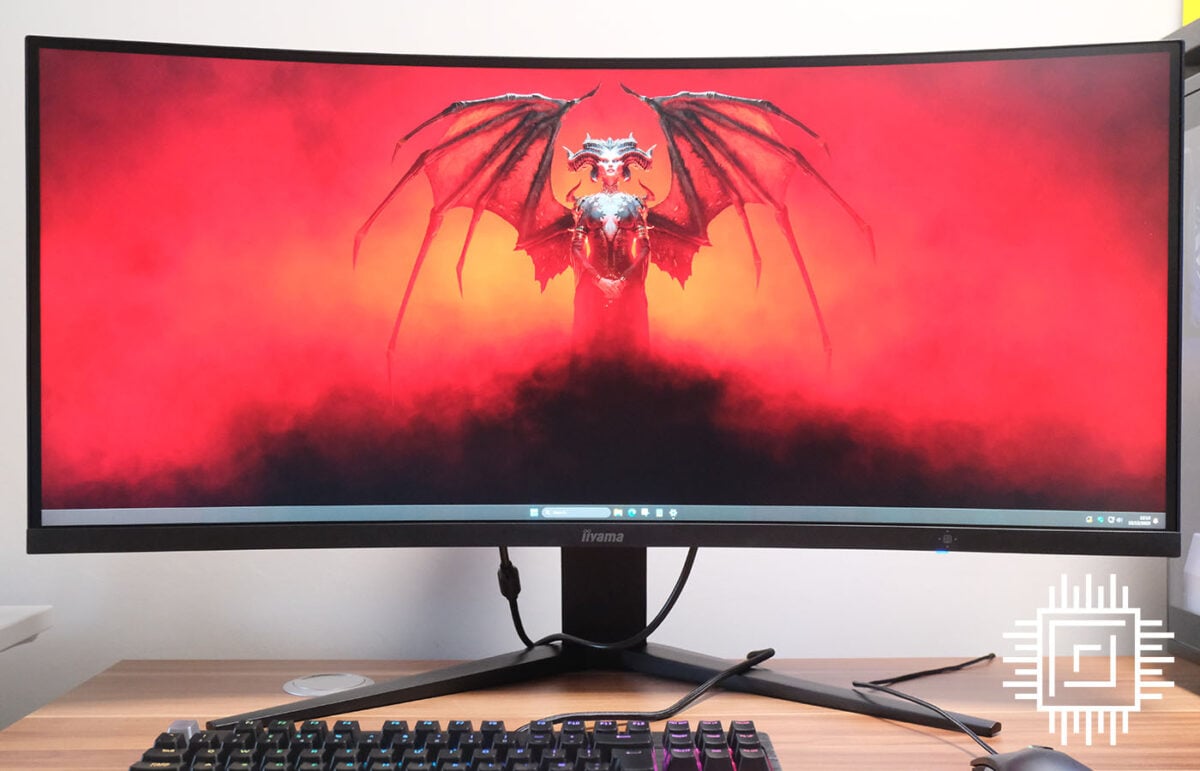
Pixel response time tends to be a challenge for VA solutions, and the same is true for the GCB3480WQSU. By our reckoning, running above 80fps minimises ghosting. Anything less and trailing will vary from noticeable to unmissable. iiyama includes a choice of two overdrive modes to help reduce blur, but while the first is worthwhile, the second is overly aggressive.
Minor caveats aside, it’s hard not to feel immersed when in game. Those migrating from, say, a regular 1080p60 screen are in for an eye-opening experience. More and more games are making better use of ultrawide resolutions, and once you’ve broadened your horizon, literally, there’s no going back. Diablo IV looks incredible at 21:9, and trust me, it’s worth downloading Microsoft Flight Simulator for the visuals alone.
Colour Credentials
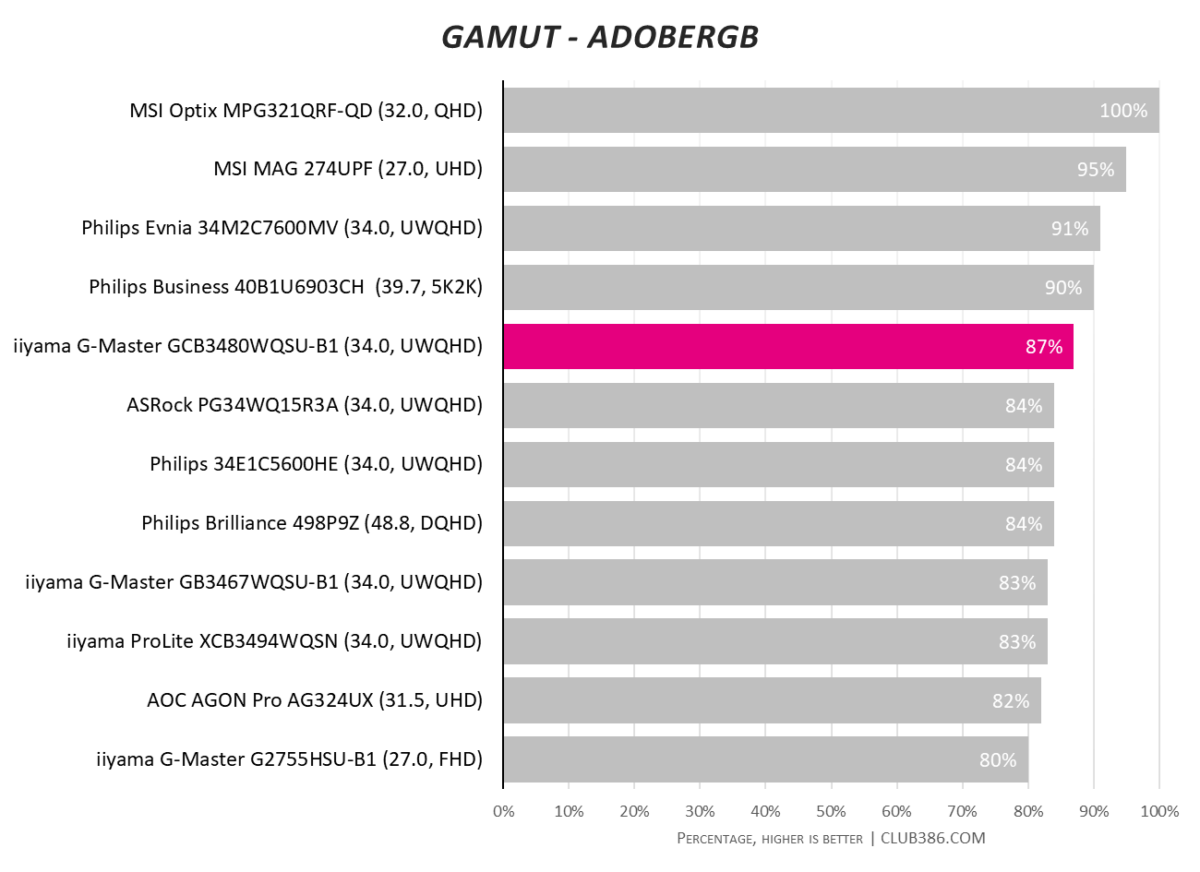
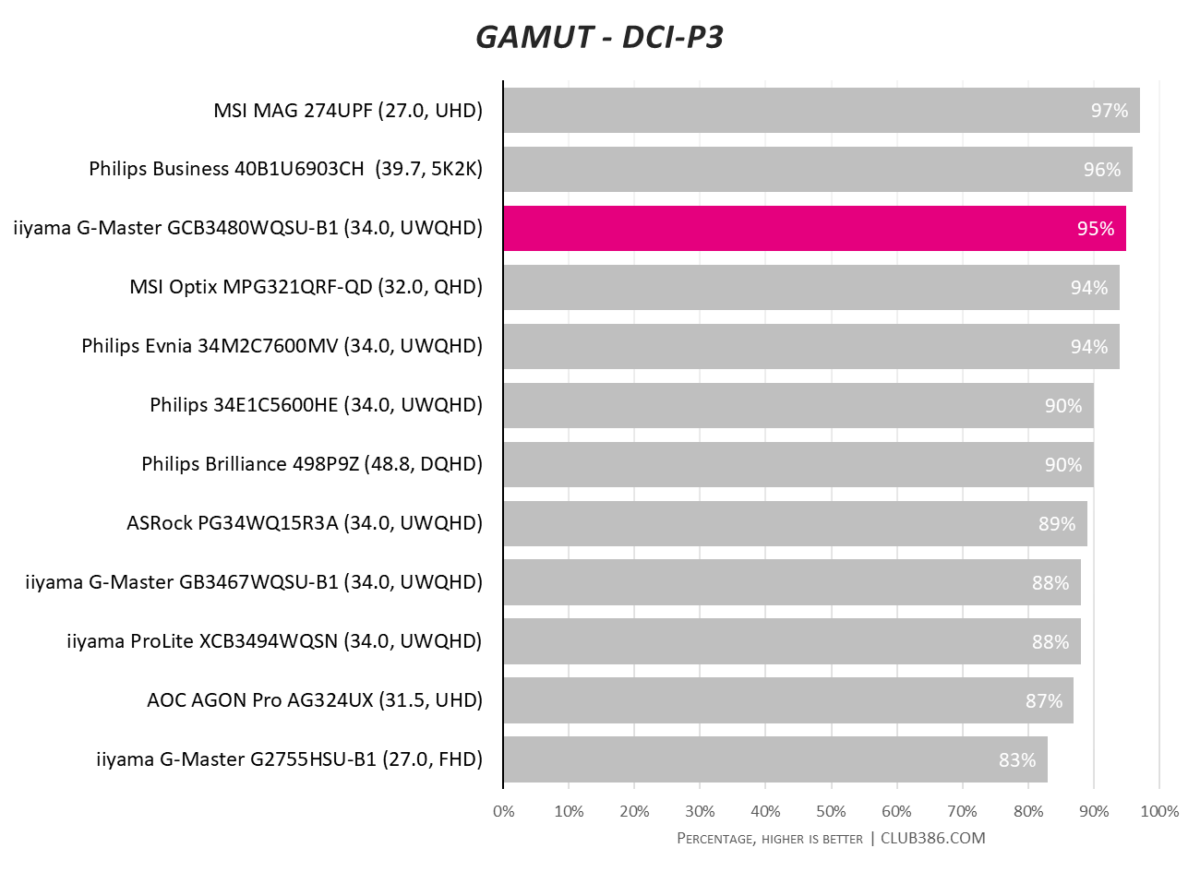
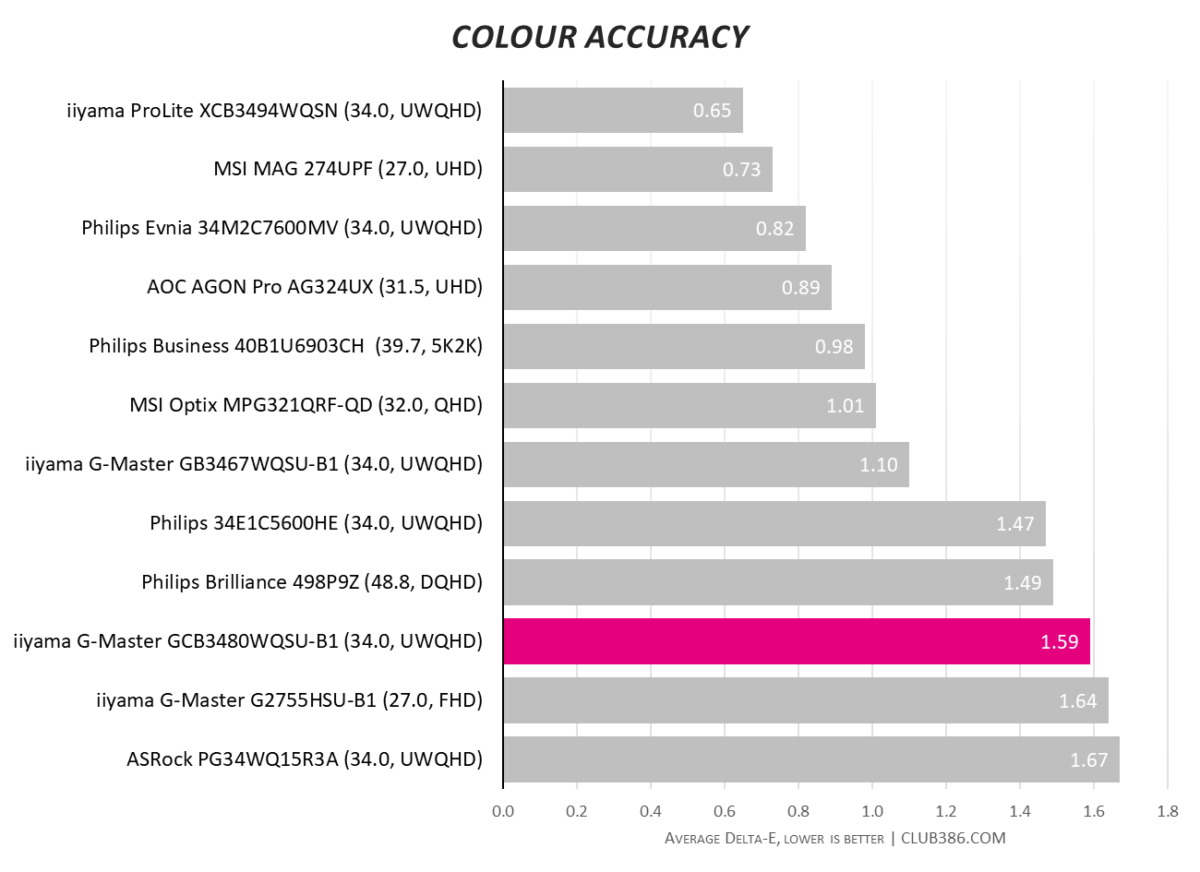
Given GCB3480WQSU is a relatively affordable VA panel, colour coverage exceeds our expectations. Out-the-box accuracy is also decent, but don’t expect colours to pop in quite the same way as an IPS.
Brightness and Contrast
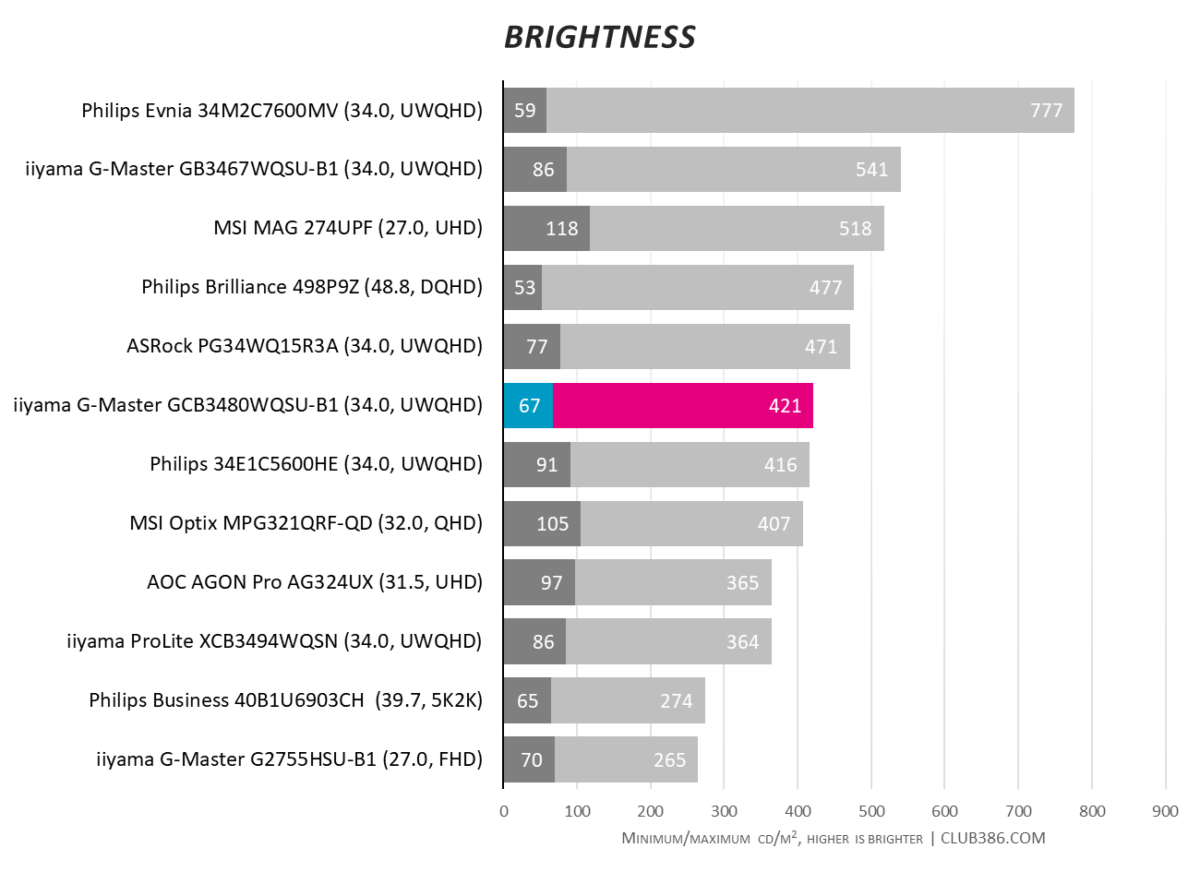
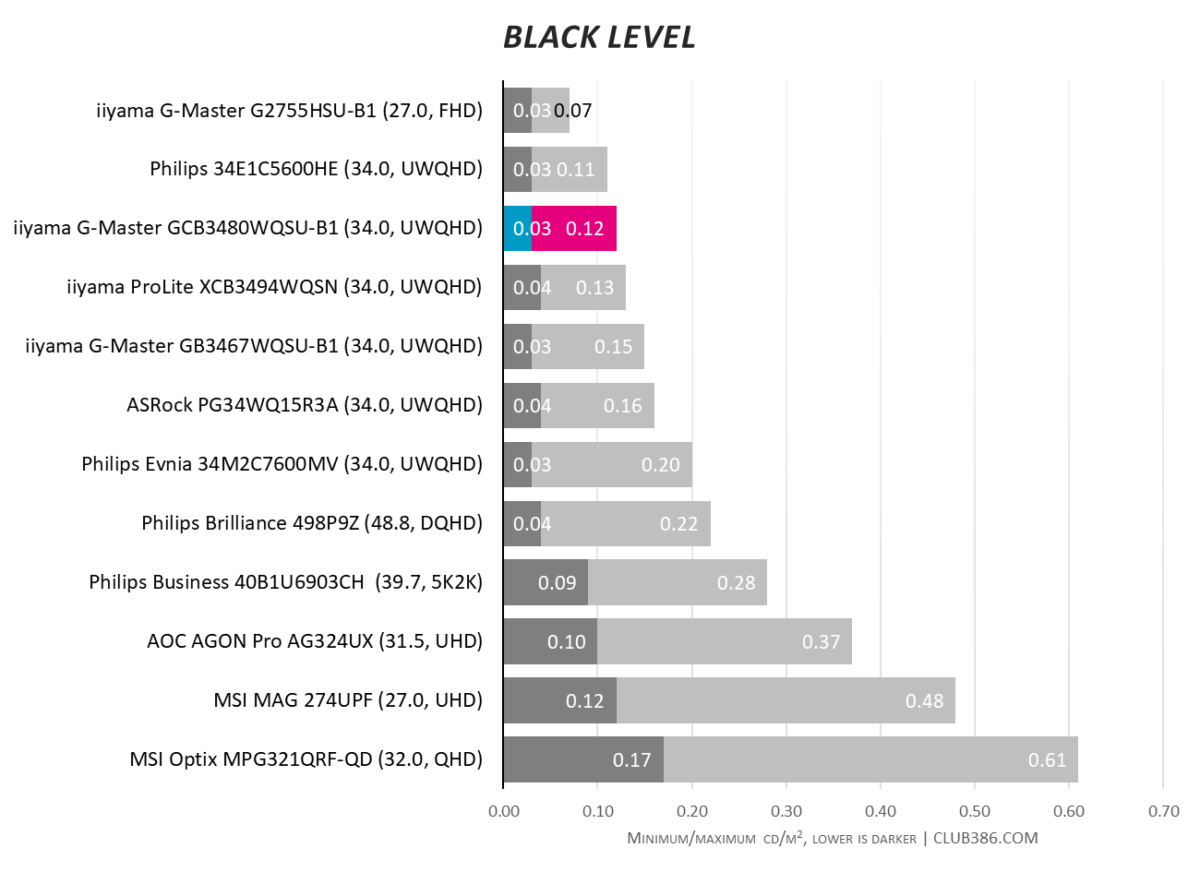
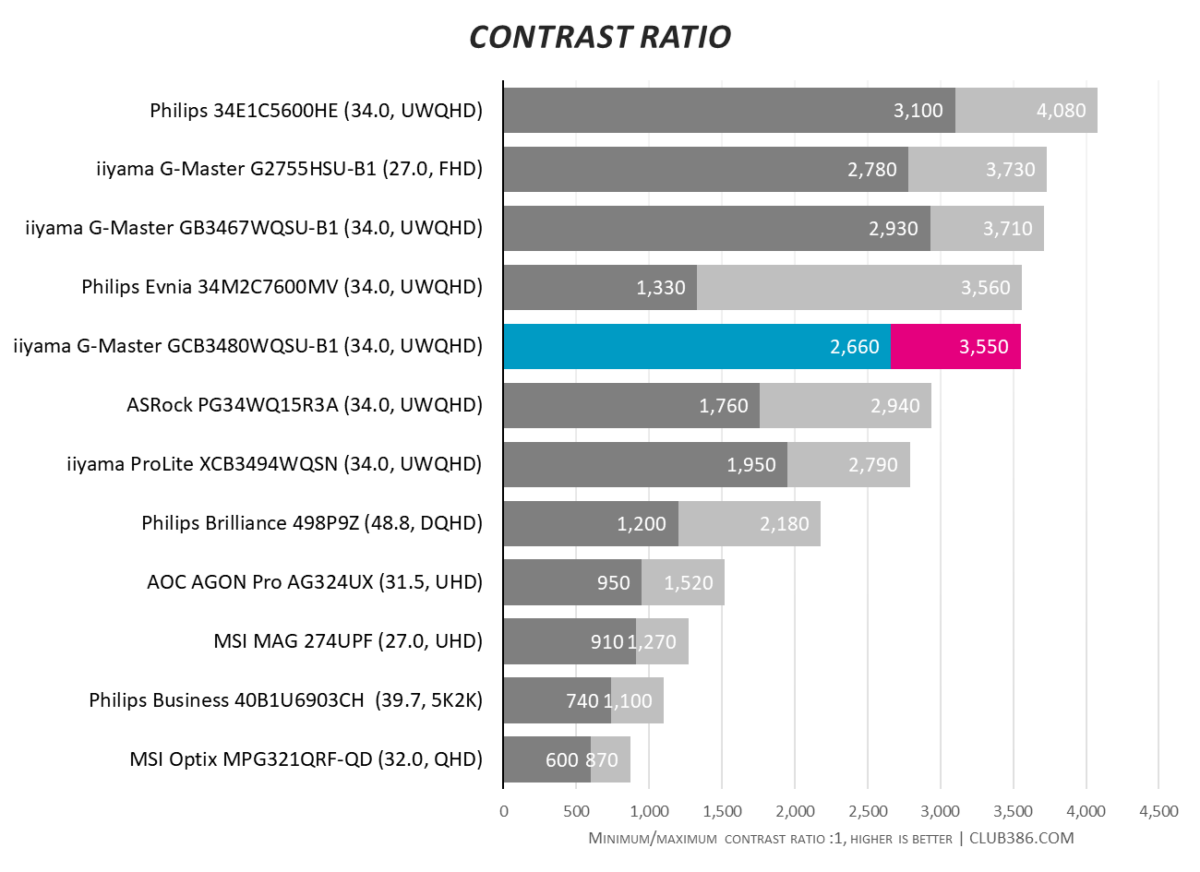
Our readings suggest iiyama’s quoted 420-nit brightness is extremely accurate. Ample for most environments, and minimum brightness drops low enough for comfort in a dark room. Good results, and though it goes without saying at this price point, HDR is supported but not ideal. You’ll want an OLED to experience the true brilliance of high dynamic range.
Uniformity and Efficiency
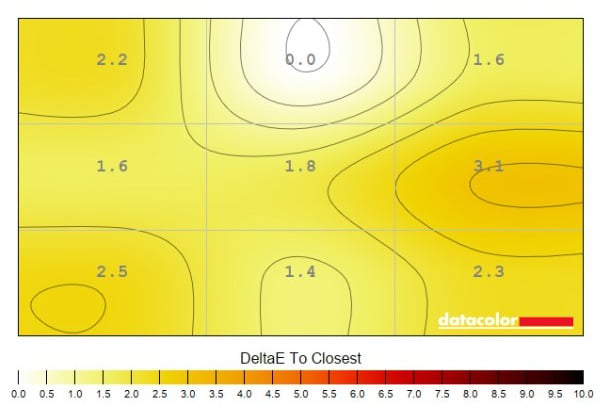
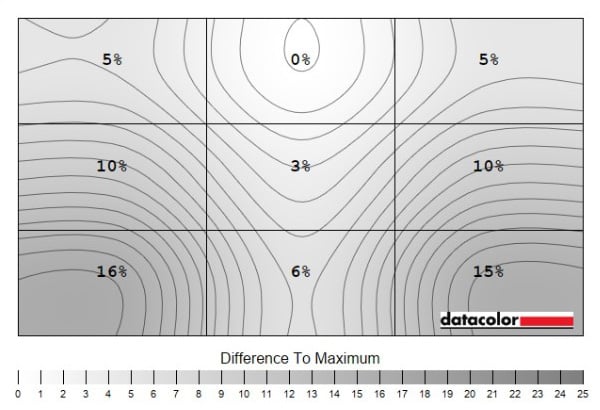
Colour uniformity (above, left) is wonderfully consistent across the ultrawide panel. Luminance uniformity (above, right) falls short of our preferred 10 per cent limit. Nevertheless, it isn’t detrimental to the overall experience.
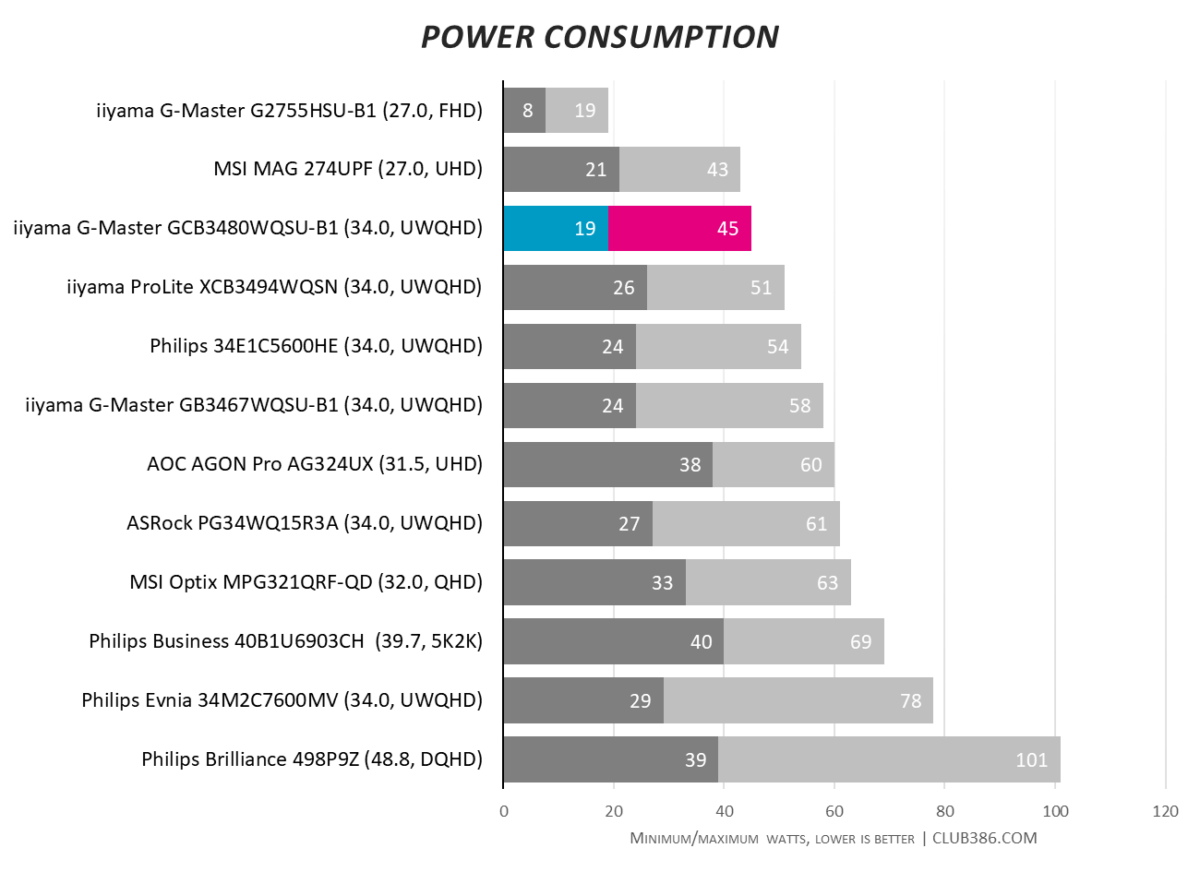
iiyama may be pushing its 34in ultrawide to the limit at 180Hz, yet power consumption remains suitably restrained. 45 watts at peak brightness is the most frugal we’ve seen from any ultrawide in this class.
Conclusion
Fast, expansive and eye-opening monitors are a prime upgrade path for 2024. Gamers, in particular, are spoilt for choice, with an abundance of options at keen price points.
Ultrawides are among the fastest growing segments, and rising popularity is helping lower prices. Those awaiting potent specifications on a budget should take a closer look at iiyama’s G-Master GCB3480WQSU. For £355, this curved 34in screen cranks an increasingly common 3440×1440 resolution to 180Hz.
Provided your graphics hardware can deliver the requisite framerates – 100fps would be a solid baseline – the end results can be spectacular. Given the fee, this is a well-rounded VA panel with broad appeal.
Verdict: A stellar first ultrawide and meaningful upgrade from a good ol’ 16:9 monitor.

